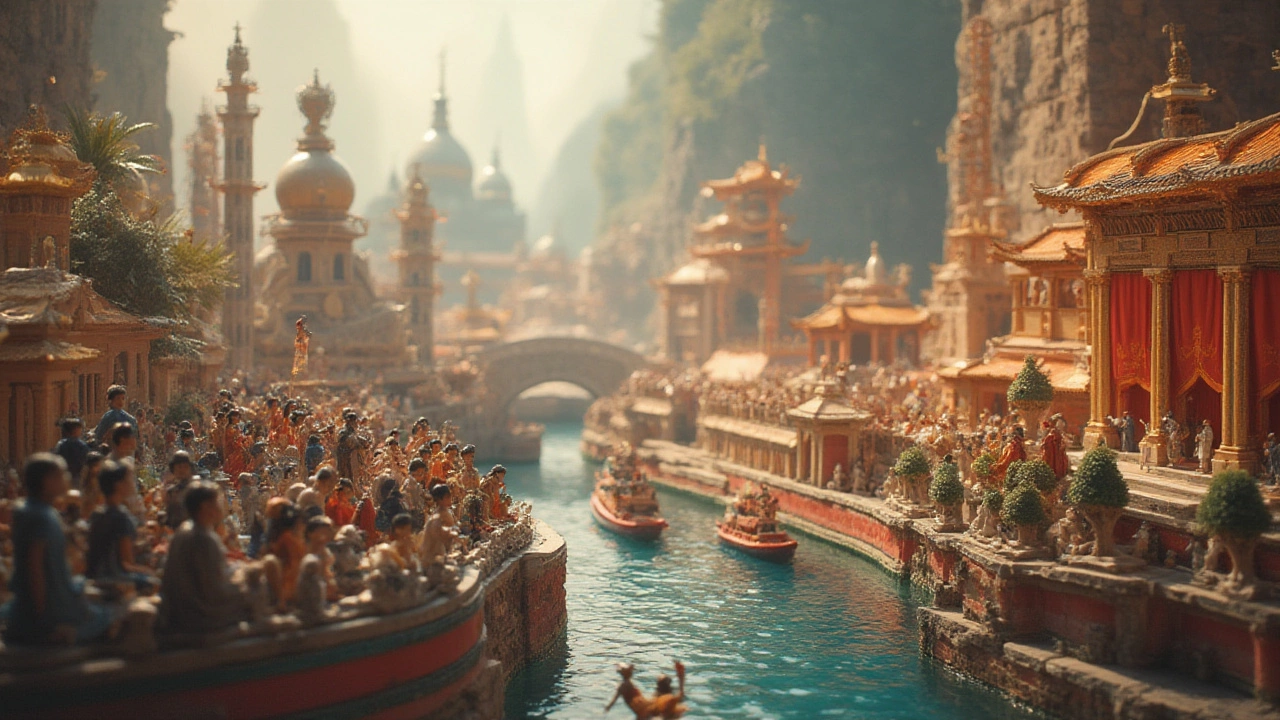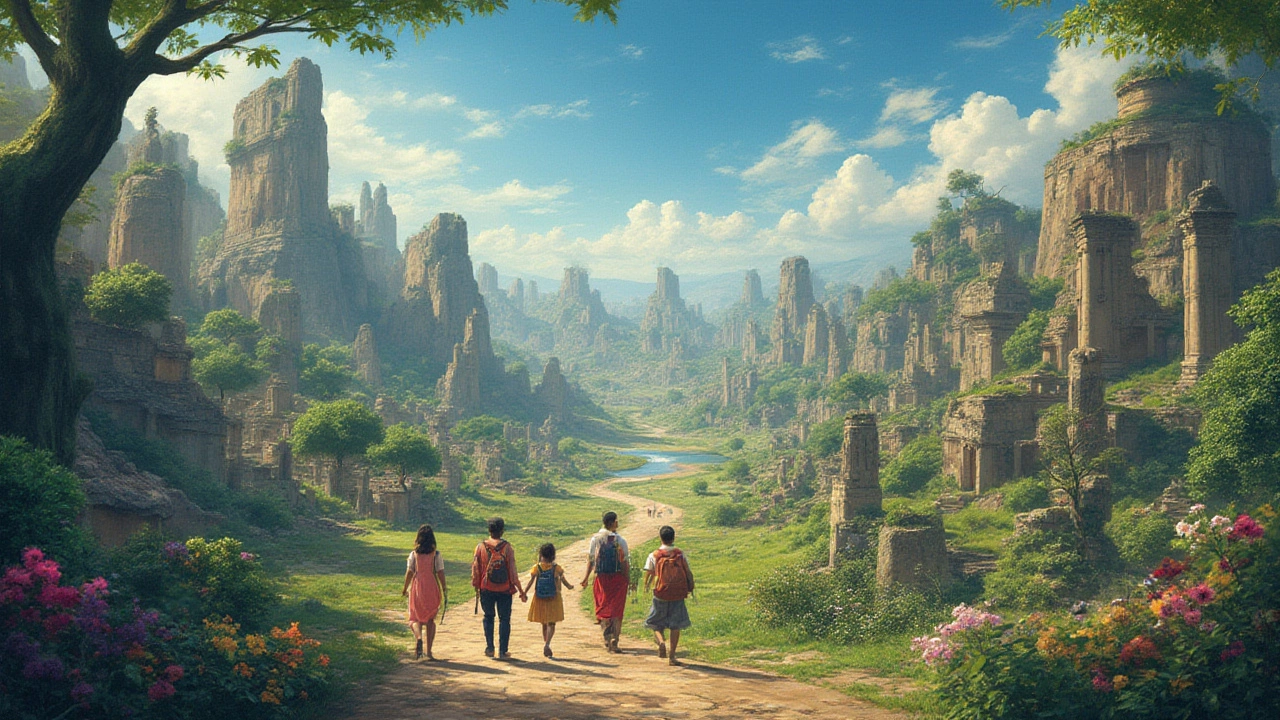Ever thought you could practically fill up a year of travel just by visiting places recognized as world treasures? There's a friendly global rivalry, but only two countries sit at the top, swapping places almost every year: Italy and China. These two nations lead the globe in having the highest number of UNESCO World Heritage Sites, those living, breathing symbols of culture, history, and jaw-dropping natural beauty. Their sites draw millions of curious travelers, students, and locals, all wanting to experience a slice of our planet’s patchwork heritage. It’s not just a number game, either. Each of these sites has earned its place by showcasing unique history, extraordinary architecture, or nature that truly wows.
The UNESCO World Heritage List: How It Works and Why It Matters
If you hear travelers brag about crossing heritage sites off their bucket lists, blame UNESCO. Since 1978, the United Nations Educational, Scientific and Cultural Organization (known to its friends as UNESCO) has recognized places of “outstanding universal value” as World Heritage Sites. These can be ancient cities, national parks, cathedrals, temples, bridges, gardens, industrial landmarks—you name it. What matters is that they embody something special about human creativity, cultural traditions, or the natural world.
The goal isn’t to make them bragging rights for jetsetters—though let’s be real, that’s a perk. Instead, the World Heritage label brings global attention, funding, and expert help to keep these treasures alive for generations. Countries submit their best candidates, and an international committee gives a thumbs up or a thumbs down each year after careful review. As of July 2025, there are a whopping 1,216 World Heritage Sites in 168 countries. 900 of those are classified as cultural, 234 as natural, and 32 as "mixed" (think both cultural and natural superstar qualities).
If you’re looking at the official list, you might ask: What makes a place worthy? There’s a long checklist: originality, integrity, historical importance, natural beauty, and sometimes even the danger of vanishing due to urbanization, natural disaster, or climate change. It’s a tough selection process, which makes the numbers even more eye-catching when you realize two countries have been in a neck-and-neck race at the top for years.
Italy: The Undisputed Champion of World Heritage Sites
Let’s just say it: Italy is the world’s cultural show-off, and with good reason. As of 2025, Italy boasts 59 World Heritage Sites. If you ask any Italian, these aren’t just dots on a map but living proof of their ancestors' creativity. The Colosseum in Rome? Leonardo’s masterpiece-filled churches in Florence? The glowing canals of Venice, with all their mysterious bridges and palazzi? UNESCO checked them all—and dozens more—into its Hall of Fame.
But Italy isn’t just about churches, ruins, and art. It also claims heritage vineyards and olive groves, the eerie Trulli houses of Alberobello, wild Dolomiti mountains, stunning Amalfi Coast villages, the royal palaces of Caserta, and archaeological marvels like Pompeii and Herculaneum. The country covers pretty much every period of human history, from prehistoric cave art in Valcamonica to the Baroque-style city of Noto in Sicily.
Travelers planning an Italian heritage tour have endless choices. Pro tip: Don’t try doing them all at once, even Italians haven’t seen every single site! Mix the icons—like Rome's Historic Centre or Pisa’s famously leaning tower—with lesser-known gems. You can visit the ghost city of Matera, carved into rock, or the early Christian mosaics of Ravenna. If you love nature, head up to the Dolomites or down to Sicily’s Aeolian Islands. Trains connect major cities, but renting a car really unlocks smaller and quieter heritage towns. And don’t be afraid to go off-season; a winter stroll through Florence or Verona often feels like sneaking backstage at history’s greatest show.

China: The Rising Powerhouse in World Heritage
If Italy’s heritage list feels like a feast, China’s is a world tour in itself. At 58 sites and counting, China’s rise has been nothing short of dramatic. From ancient wonders like the Great Wall to the elegant gardens of Suzhou and the “roof of the world” landscapes of Tibet, China channels deep history, philosophy, and cutting-edge conservation.
China’s sites aren’t just old—they’re alive. The Forbidden City in Beijing still pulses with rumors and legends, while Mount Taishan has welcomed artists and pilgrims for over two millennia. There’s natural marvel too: the stone forests of Yunnan, the rainbow-hued Danxia Landform, Sichuan’s panda reserves, and the world’s largest karst cave systems. China’s heritage program is well-funded and ambitious, turning former lost ruins into thriving attractions and reviving forgotten crafts in places like the ancient towns of Pingyao and Lijiang.
Tips for exploring China’s heritage? Plan ahead and leave room for surprise. Trains, high-speed rail, and flights link most sites, but distances are huge. Pick a region and build your route around clusters of World Heritage stops—like exploring the Buddhist caves of Dunhuang and Datong, or combining classical gardens with the silk towns of the Yangtze Delta. Avoid long national holidays if you’re sensitive to crowds. And don’t dismiss lesser-known places: Kaiping Diaolou’s fortress-mansions, Fujian’s tulou earth houses, and cultural landscapes like the rice terraces of Yuanyang deserve a spot on any must-see list.
Other Countries in the UNESCO Race: Why the Top Spot Shifts
It’s not just a two-way game. Spain, Germany, and France have plenty to brag about too. Spain lands just behind with 50 valid sites in 2025, scattered from architectural heavyweights like the Alhambra of Granada to prehistoric art in the Caves of Altamira and Gaudí’s surreal buildings in Barcelona. Germany boasts 52—from ancient cathedrals like Cologne’s, to the futuristic Zollverein Coal Mine Industrial Complex, blending past glory with gritty recent history. France clocks in at 45, including the Palace of Versailles, Chartres Cathedral, Carcassonne’s fortified city, and the Loire Valley’s châteaux.
These rankings aren’t set in stone. New sites are added every year at UNESCO’s July committee (the most recent round was held in India in 2024), and sometimes political wrangling, restoration work, or disaster can add or subtract a site from the list. For a long time, Italy led by a comfortable margin, but China’s skilled diplomats and surging investment in preservation led to a leapfrogging match in the last decade. Don’t be surprised if another country, with ancient roots (hello, Greece or Turkey), eventually picks up steam. Even smaller countries are finding creative ways to nominate their unique landscapes and monuments. The diversity of the list keeps things competitive and fascinating for travelers and historians alike.
If you find yourself inspired to see more heritage sites, digital tools like the official UNESCO World Heritage app and interactive maps (check out whc.unesco.org) can help you create custom routes by theme, period, or region. Social media channels and heritage-focused travel blogs are booming, with on-the-ground stories and tips for responsible travel.

Tours, Tips, and Responsible Travel at World Heritage Sites
The magic of UNESCO sites is obvious the minute you step into them, but there’s a right (and wrong) way to experience them. Overtourism is a real challenge: Venice limits tourist numbers, Machu Picchu requires timed tickets and guides, Angkor Wat in Cambodia posts strict dos and don’ts. When planning your trip, check for booking systems or permits in advance—especially for hotspots in peak summer.
Here are a few golden rules for visiting any world heritage site:
- Always respect local customs. Many sites still function as spiritual or community spaces.
- Stay on marked paths—off-roading and souvenir hunting can cause huge damage.
- Support local guides and crafts; their insights can unpack stories you’d miss solo.
- Pick quieter times of year, not just to avoid crowds, but to see real daily life.
- Don’t forget smaller or newer sites—there’s history everywhere, and you might discover your new favorite place.
Finally, why do these sites stay on the list in the first place? They aren’t museum pieces frozen in time. Even the most recognizable places—like Florence’s Duomo or Beijing’s Summer Palace—evolve with local life, seasonal events, rituals, and the communities that call them home. That’s why UNESCO pushes for “living heritage,” where ancient towns still echo with laughter, festivals, and food smells, not just tour guides quoting dates. When you visit, you aren’t just ticking off a list—you’re stepping into a shared global story stitched together from every continent, culture, and era.
